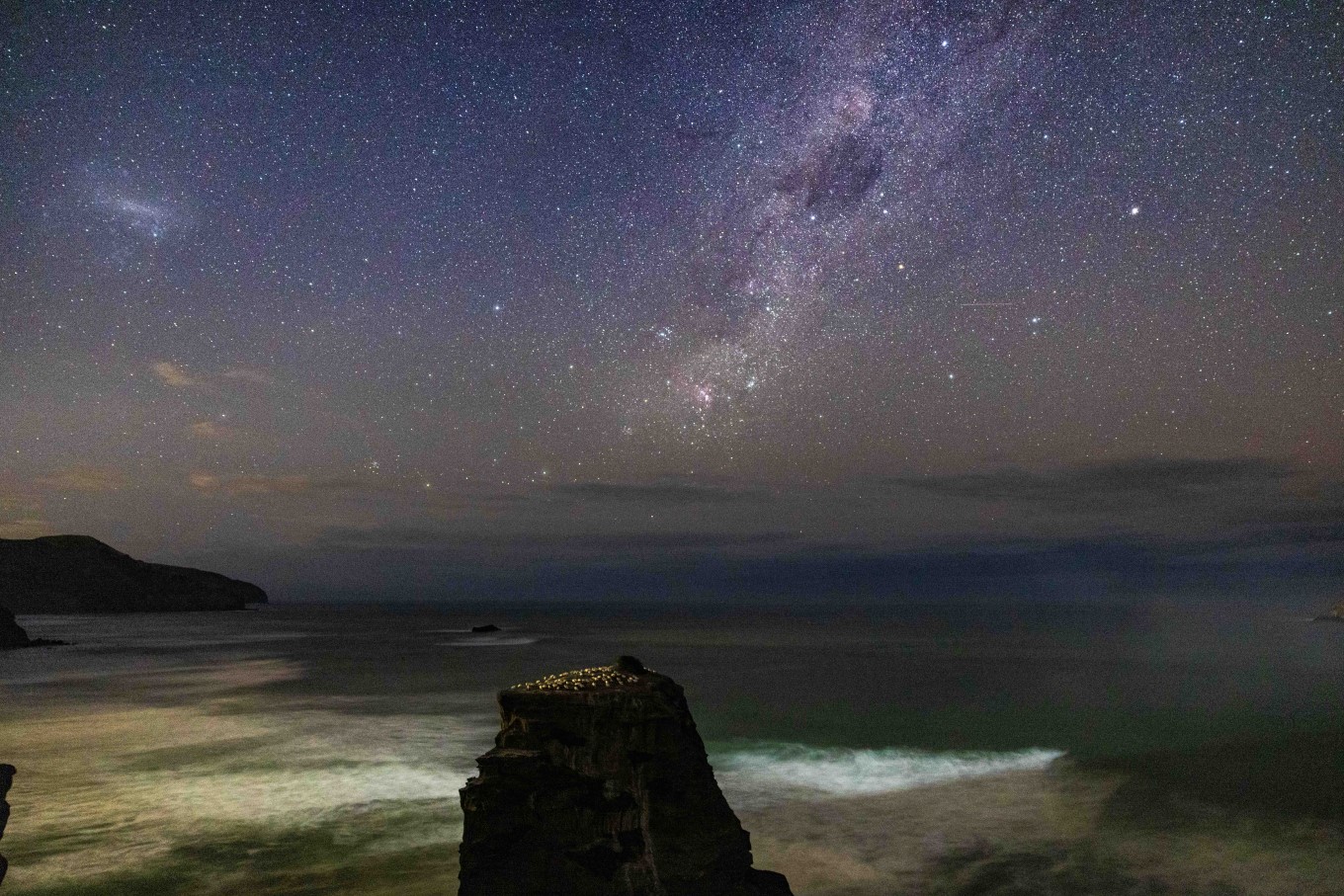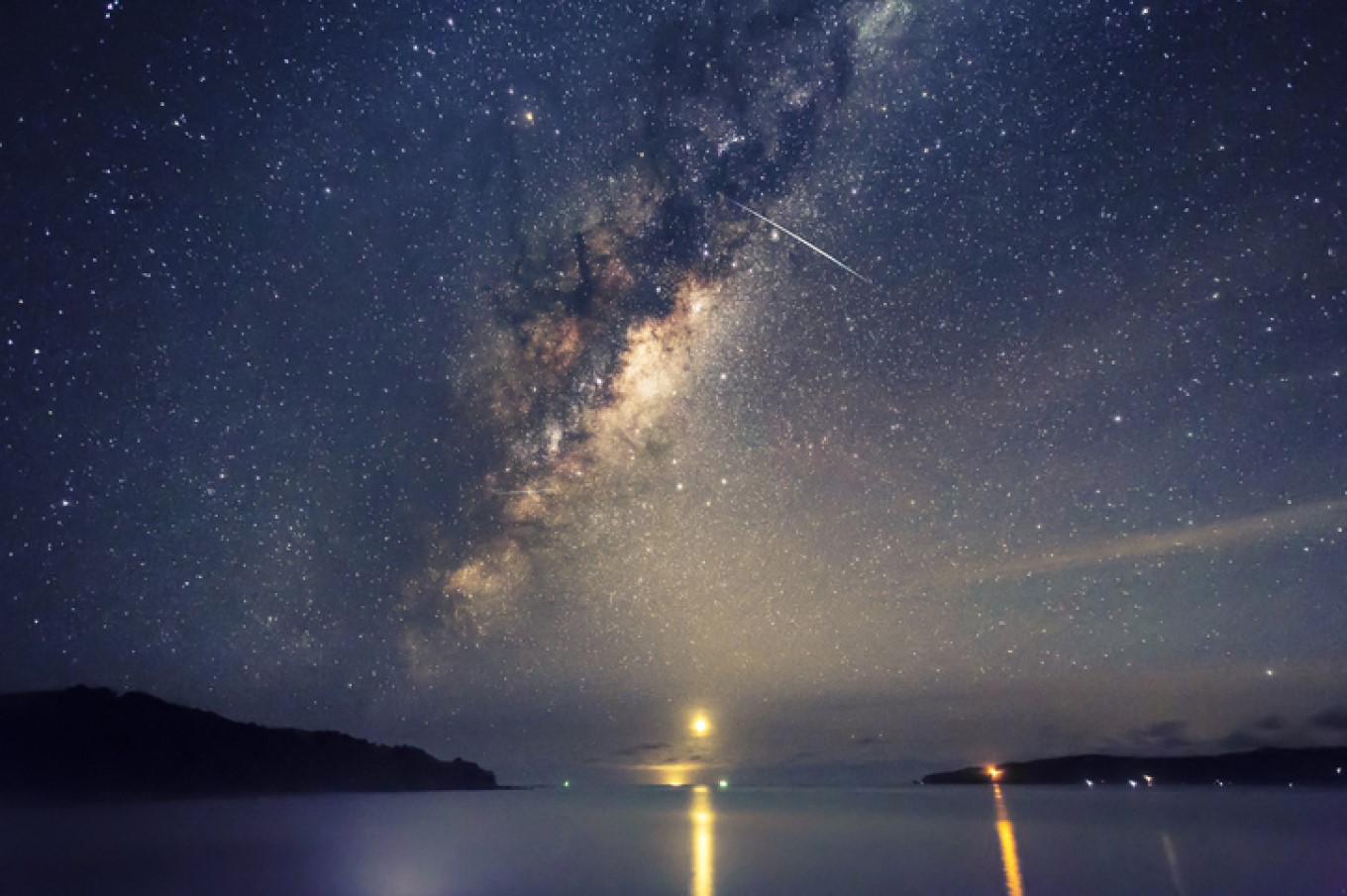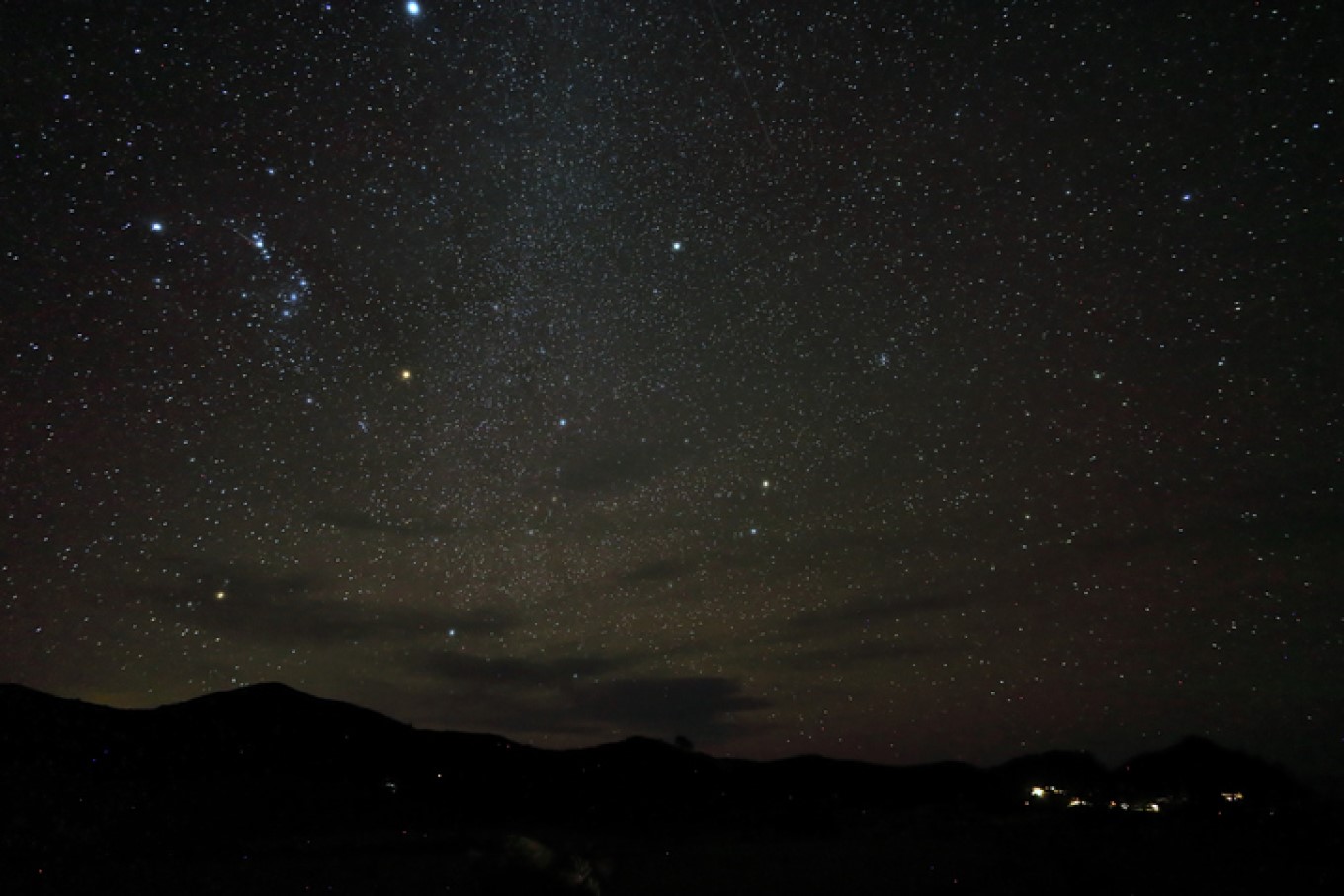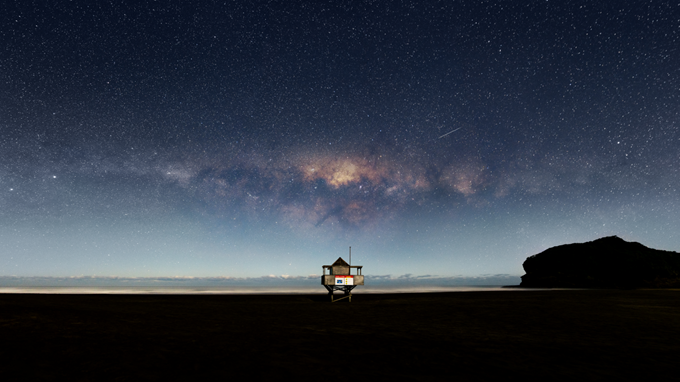Twinkle, twinkle, little star, how I wonder where you are! Auckland might be the big smoke, but there are still plenty of wide open spaces where you can enjoy the wonder of a starry night sky. In fact, put it on your winter bucket list to visit or camp at these destinations after dark, get a bit cosmic and connect with the universe by indulging in a bit of stargazing.
Muriwai Beach
This black-sand beach on Auckland’s wild west coast is an excellent spot for stargazing – maybe this is the real reason why tens of thousands of gannets choose to nest here? If you’re after that perfect photo, make sure you stay safely on the shore and off the rocks. Even if you’re not keen to go full astrophotographer and stay up all night, on a fine day Muriwai will spoil you rotten with a golden-pink sunset that will fill your heart with joy. Please remember to check the Safeswim website if you plan to enter the water at all, and to stay safe around the water at all times for you and your loved ones.

A starry sky above the gannet colony at Muriwai. Photo: Carmen Bird Photography
Te Henga / Bethells Beach
Another west coast spot that’s ideal for viewing whetū (stars) is Te Henga / Bethells Beach, which faces directly out to the Tasman Sea and has very little light pollution from surrounding buildings. It’s about a 10-15 minute walk from the carpark to the black sand of the beach, so make sure you have all your supplies with you such as a warm jacket and a torch. Keep in mind that beautiful Bethells is also one of our most dangerous beaches, so don’t entertain any romantic ideas about night swimming.
Tāwharanui Regional Park
The main vehicle gate at this stunning regional park an hour north of the city centre shuts at 9pm, just after sunset in midsummer, so unless you’re happy to walk into the park, stargazing is best done if you’re staying at the Auckland Council bach there or the popular Tāwharanui Campground. The grassy hill that overlooks the campground is the ideal spot for rugging up and enjoying a stellar night sky display. As well as offering you opportunities to see shooting stars and the Milky Way, you’ll get beautiful views over Hauraki Gulf / Tīkapa Moana towards Te Hauturu-o-Toi / Little Barrier Island. If you can’t time your trip with the new moon period when the Milky Way shows up best, a full moon still looks enchanting as it makes a golden path across the water. You might even hear a kiwi calling – magic!

Venus rises over Tāwharanui Peninsula.
Shakespear Regional Park
You don’t need to travel far from the city centre to see stars. From one side of Shakespear Regional Park on Whangaparāoa Peninsula you can see the twinkling lights of Auckland City and the Sky Tower, but if you climb the hill to the lookout you’ll get 360-degree views around the peninsula. Again, this park closes its gates at 9pm during summer, so book a site in the Te Haruhi Bay Campground so you can stay up all night and count how many shooting stars you see.
Arataki Visitor Centre
Not too far from town, and just a few kilometres west of Titirangi town centre, Arataki Visitor Centre offers breathtaking views across the Waitākere Ranges and Manukau Harbour. The ramps leading to the decks have been fitted out with soft lighting so as not to interfere with the views. Listen out for a ruru (morepork) calling through the night. For the curious sort, there is a Slip Track around a minutes walk from the Arataki Visitor Centre carpark which affords greater aspects of the night sky.
Aotea / Great Barrier Dark Sky Sanctuary
Tāmaki Makaurau even has its own official Dark Sky Sanctuary on Aotea / Great Barrier Island. Lying 100km from the mainland across Hauraki Gulf / Tīpuna Moana, this remote island is more than 60 percent Department of Conservation land and is off the grid, meaning there is very little light pollution as there are no street lights. In fact, it was the first island in the world to be given Dark Sky Sanctuary status by the International Dark-Sky Association, meaning it’s one of the darkest places in the world! You can either catch a ferry or fly to this remote part of our region.

Aotea / Great Barrier Island has Dark Sky Sanctuary status, meaning it is one of the darkest places in the world.
Maraetai Beach
Just 40 minutes from central Auckland, this pretty beach with its iconic jetty is also a great spot for looking up at night. Have a picnic dinner on the sandy beach, then settle in and wait for the whetū (stars) to appear.
Snap that stellar shot
Reuben Looi is a photographer with a passion for astrophotography. Here are his tips for getting that awe-inspiring night-sky shot:
-
Check the moon calendar and only shoot on a night with a new moon. That's when the stars, including the Milky Way, show up.
-
Make sure the sky is clear with no clouds.
-
Set your phone on a tripod or stand so it can be steady.
-
To show the stars at their brightest, you need to long point your phone or camera in the direction you want, then set it to a 30-second shutter speed and an aperture of f/2.8, and make sure there is no light pollution or flashing lights nearby. Some phones have manual settings that you can do this on. Otherwise, there are paid and free third-party apps that will allow you to access this setting.
-
You can use an app to track when and where the Milky Way is going to be.


